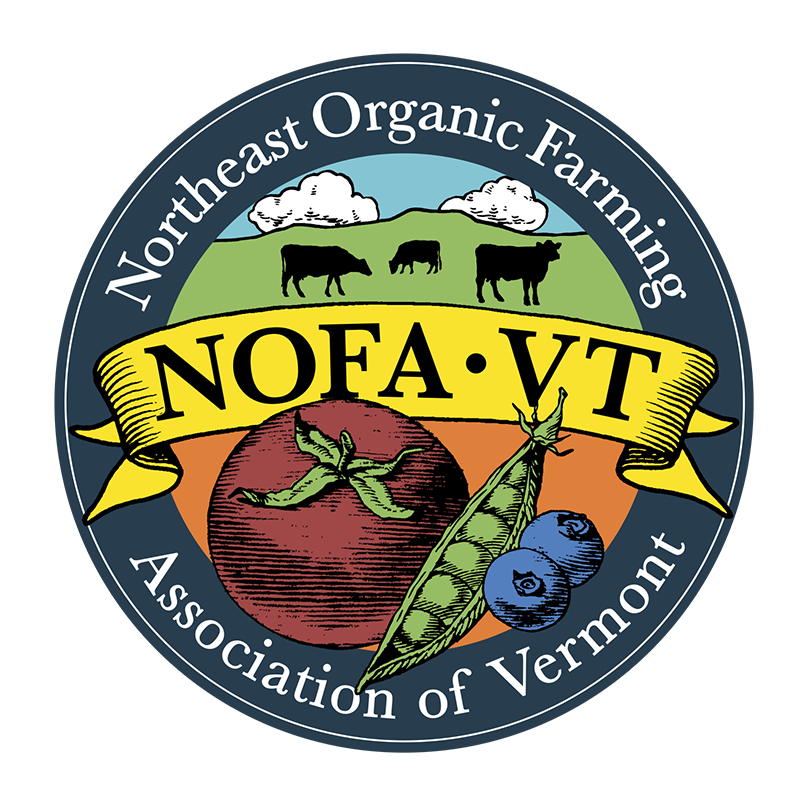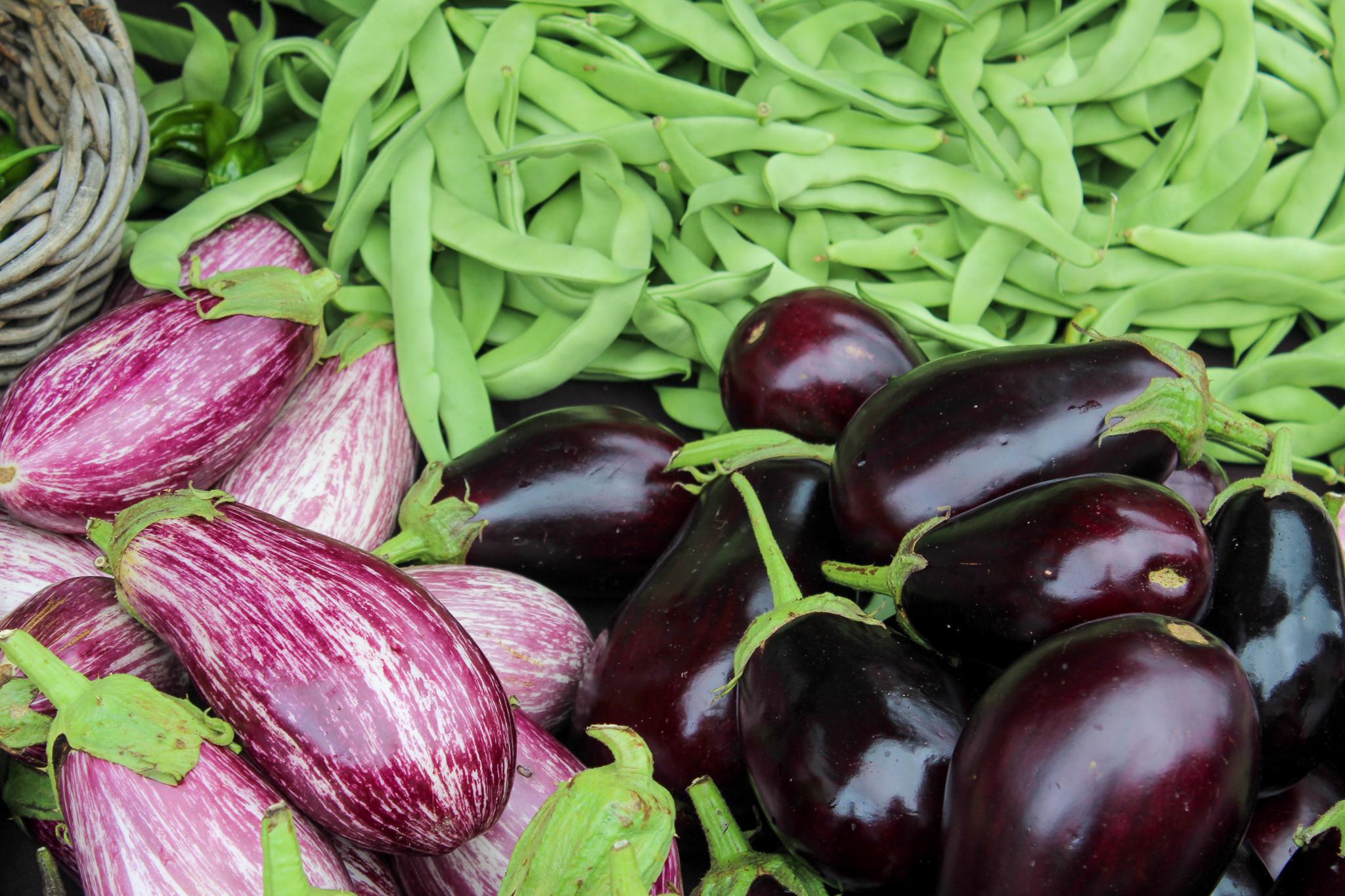When longtime organic dairy farmer Jack Lazor of Butterworks Farm passed away in November of 2020, NOFA-VT received several generous gifts to start a fund in his honor to continue his incredible legacy of dedication to building soil health through farming practices and his passion for sharing these practices with others. In 2021, the Jack Lazor Memorial Soil Health Stewards program launched its inaugural cohort, and the program continues this year with two new cohort groups—one for diversified livestock farmers and one for small scale diversified vegetable growers. These groups are intended to provide a space for farmers to learn from and with each other about the soil health topics that are most relevant to their farm businesses. Each consisting of about 12 farms, the structure and content of each cohort has been co-created by the participants alongside NOFA-VT facilitators and technical assistance providers.
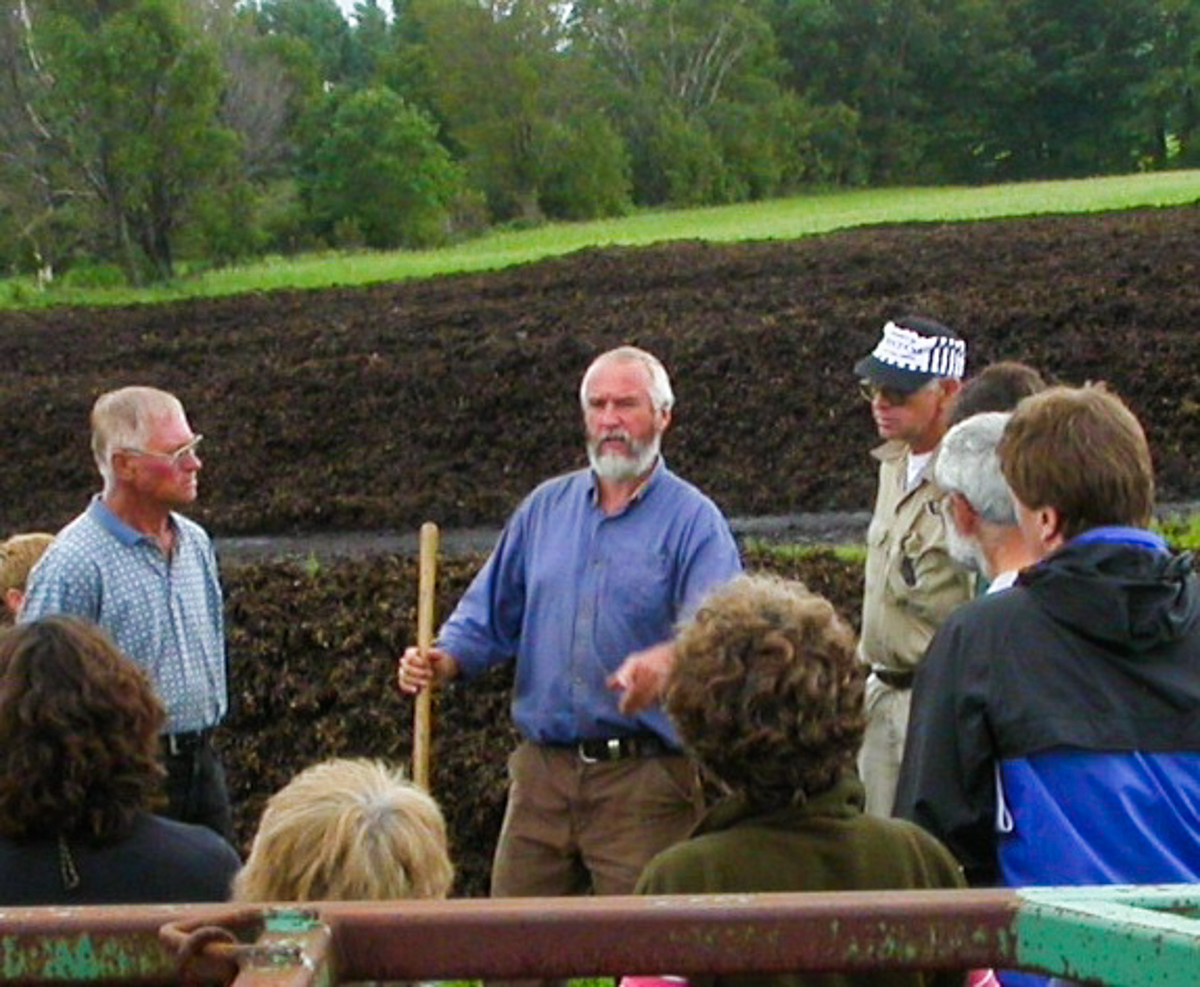
The livestock cohort kicked off this winter with several virtual sessions to discuss soil health practices, learn about reading soil tests, and pick the brains of pasture agronomy experts. Topics ranged from increasing the productivity of worn-out hayfields to improving drought resilience, and from rotational grazing practices to the best ‘bang-for-the-buck’ choices for fertility amendments. This summer, a packed season of farm visits on cohort participants’ farms will allow for exploration of soil health above and below ground: soil biology, chemistry, and hydrology below; grasses, forbs, trees, and pollinators above.
The vegetable cohort met three times this winter, twice virtually and once in-person, and surfaced themes of interest including cover crops, amendments, and soil biology, as well as tillage and cultivation practices. Over the course of this year’s growing season, the group is slated to visit one farm per month with the opportunity to tour the farm, practice in-field soil assessments, and build peer-to-peer connections among growers of similar scale and production type. In keeping with the goal of co-creating the learning experience with the farmers in the group, recently participants have asked to build out some simple on-farm trials to test the efficacy of various soil health practices in the context of their own operations.
In early May, the vegetable cohort began the season of farm visits with a gathering at Small Axe Farm in Barnet, VT. Driving out to Barnet on a perfectly sunny and warm spring day, it would be easy to miss the entrance to Small Axe Farm, one of many long and winding driveways off of a hilly gravel road in the Northeast Kingdom. Once the farm is in sight, however, it is unmistakable and extraordinary: a hand built house and tidy one-acre production farm consisting of raised beds and several unheated high tunnels nestled atop the hill.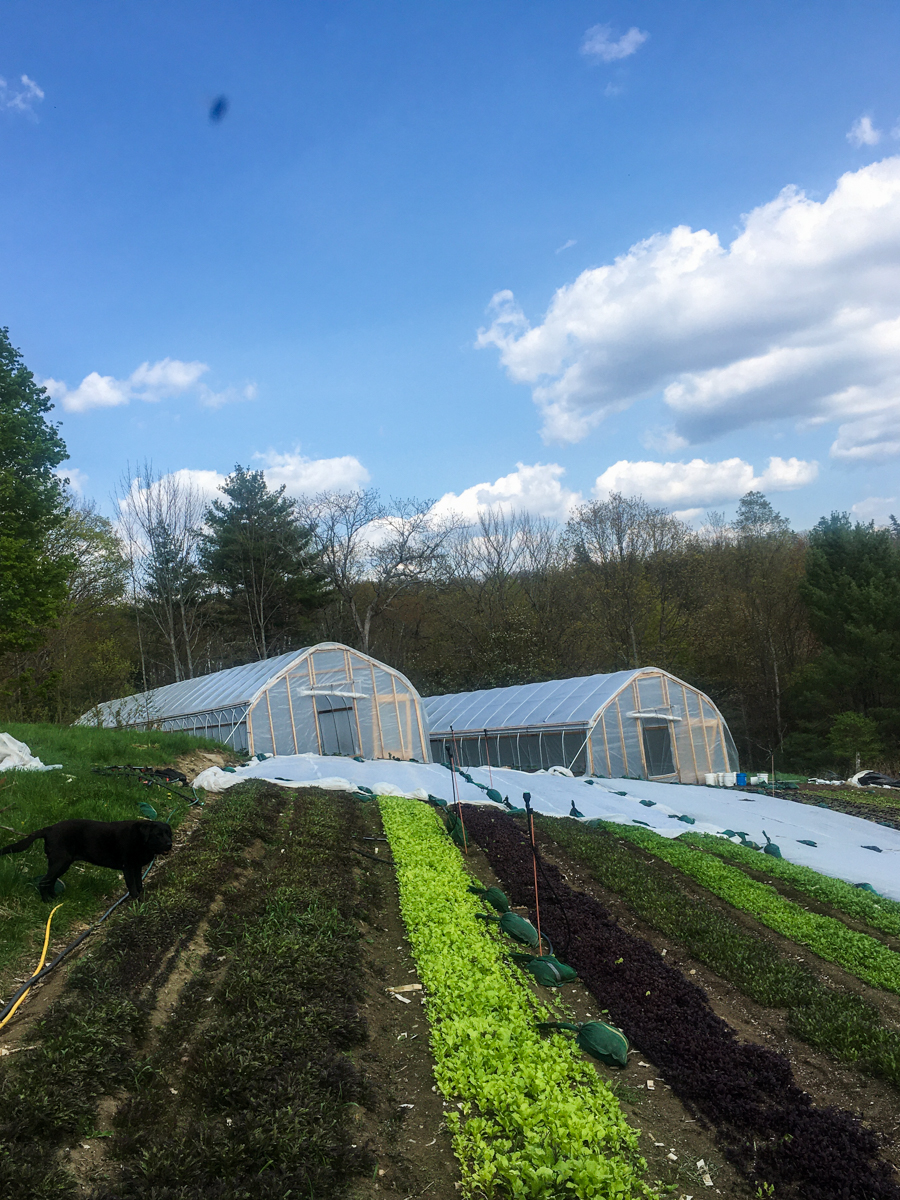
Participants joined Evan Perkins and Heidi Choate, co-owners of the farm, and their crew of farm employees for a tour and a discussion about their soil health goals and practices. In keeping with the goals of the cohort, and the spirit of Jack Lazor’s passion for soil health and education, the farm tour was interactive and conversational. While the planned focus was Evan and Heidi’s no-till systems, the learning was emergent based on the questions and observations from the group. Stopping atop a steep hill filled with terraced beds of greens, one participant took in the scene and asked in awe, “How is your soil still here?” Another noted the perfectly intact leaves of Asian greens, largely untouched by flea beetles (a common pest known for chewing holes in tender brassica leaves, often leaving them un-saleable), and inquired about which practices were protecting the crop from this dreaded pest.
Evan calmly and humbly explained their general approach of keeping natural ecosystems surrounding the farm as wild and natural as possible as one of several strategies for maintaining balance. He shared his observation that keeping the land surrounding the fields mostly unmowed seemed to have a positive impact on their flea beetle population, and pointed out ways that they utilize the natural growth on the land to their advantage for decreasing water and fertility runoff and soil erosion. They like the idea, he shared, that after they stop running the farm, the land could just return to its natural state as it had been before they started the farm in 2008.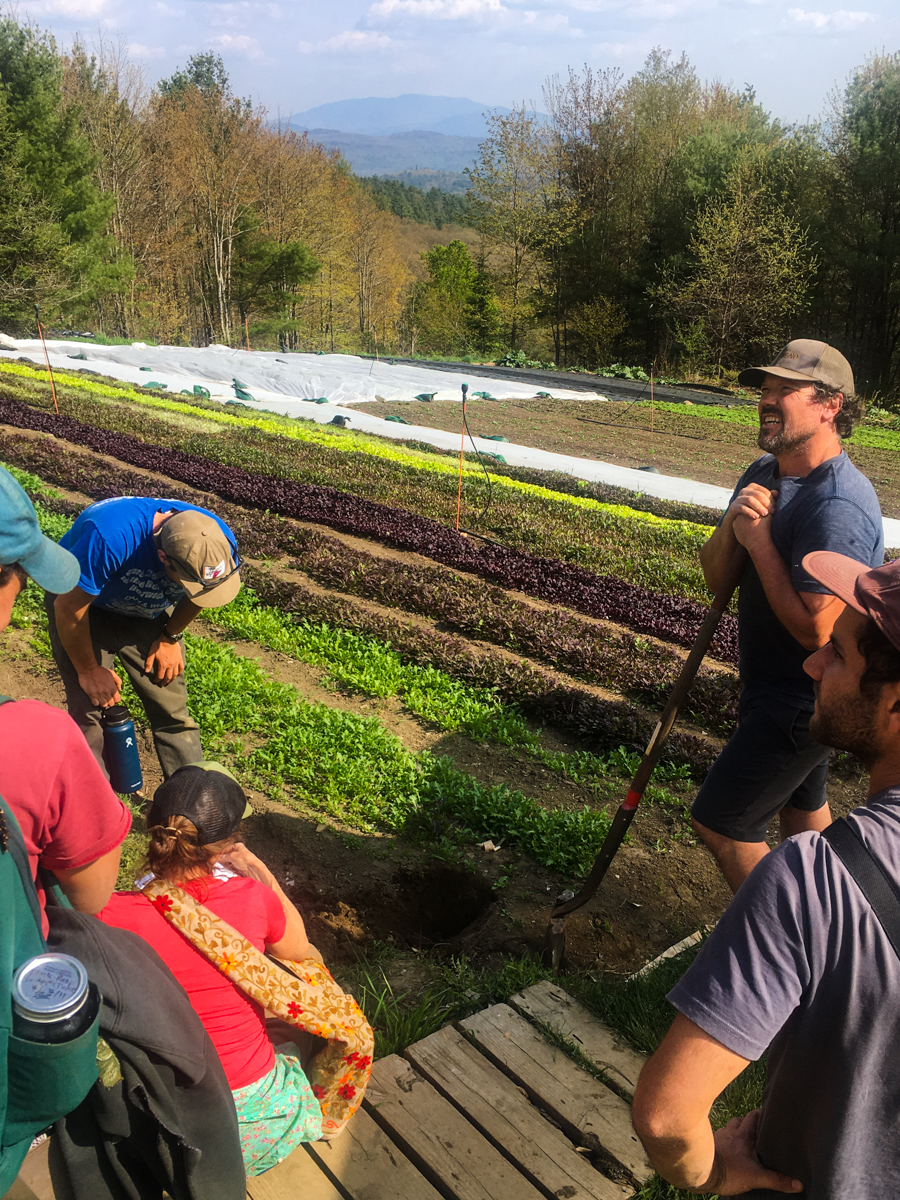
After a look around the lower fields the group headed uphill to the main part of the farm to take a closer look at the soil. Becky Madden, a vegetable nutrient management specialist at UVM Extension who has worked with Small Axe Farm to improve their soils, commented on the low pH that she first encountered when she started soil sampling at the farm. Over the years, Evan and Heidi have worked to bring the pH up by spreading lyme and wood ash, and the group saw the results through a pH test conducted in the field. Digging into the soil helped participants to visualize some of the physical properties of the Small Axe Farm soils, both in the field as well as in the tunnels. The group explored elements such as soil texture, color, and the root structure of plants growing in the soil.
The impact of their no-till systems on the soil was evidenced both by the physical elements observable in the soil as well as high vegetable yields and the gross income resulting from the one-acre farm that provides for their family. Evan was quick to point out, however, that while they have developed systems that work for them, in this specific context, the same systems wouldn’t necessarily work for everyone. That said, the group left with much to think about and try on their own farms.
In the closing circle, when asked to share back one takeaway from the farm visit, responses ranged from being inspired by the way Small Axe Farm balances production goals with ecological goals to more specific things like an interest in learning more about nematodes and what they can tell us about the soil, a topic that came up during our walk around the farm. Others shared specific strategies they were taking home to try at their farms, such as lettuce-growing techniques and testing for salts in their high tunnel soils.
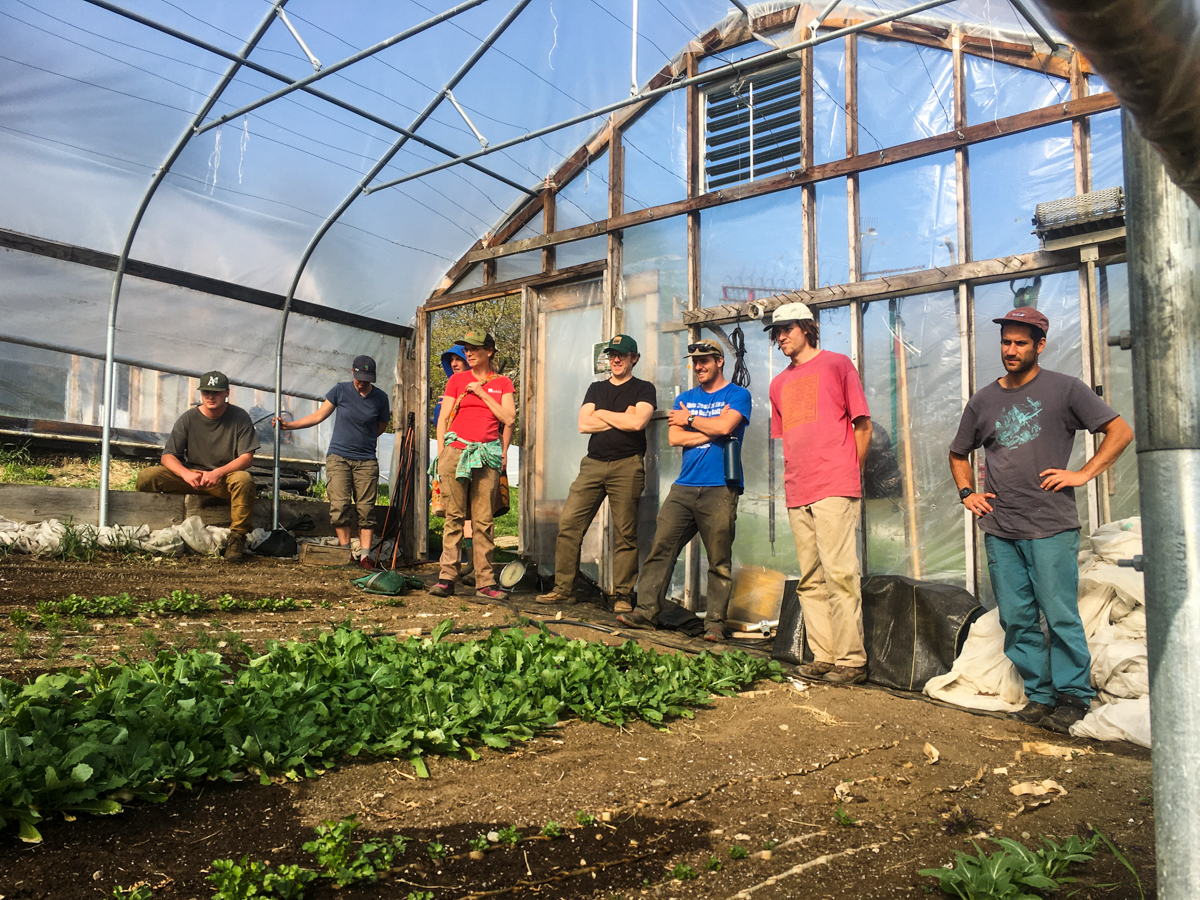
As part of our goal to build community and connection between farmers of similar scales and production types, we ended the visit by sharing food and drinks and taking the opportunity to connect socially. This can be rare for farmers during the growing season when getting away from the farm is often a challenge. Several participants shared their excitement about the chance to see other similar farms in action during the growing season and looked forward to the season of farm visits to come.
As the day came to an end, Evan shared that he has long been inspired by Jack Lazor and all that he contributed to the field of soil health practices, and has been grateful that this cohort group developed in his memory. Tasting Butterwork Farm’s yogurt and learning from Jack about their farming practices was integral to Evan and Heidi’s decision to move to Vermont and farm here. It is clear that Jack was revered by farmers around the state and the country, and it is an honor to have the opportunity to build on his legacy and inspire the next generation of farmers with his passion for soil health.
